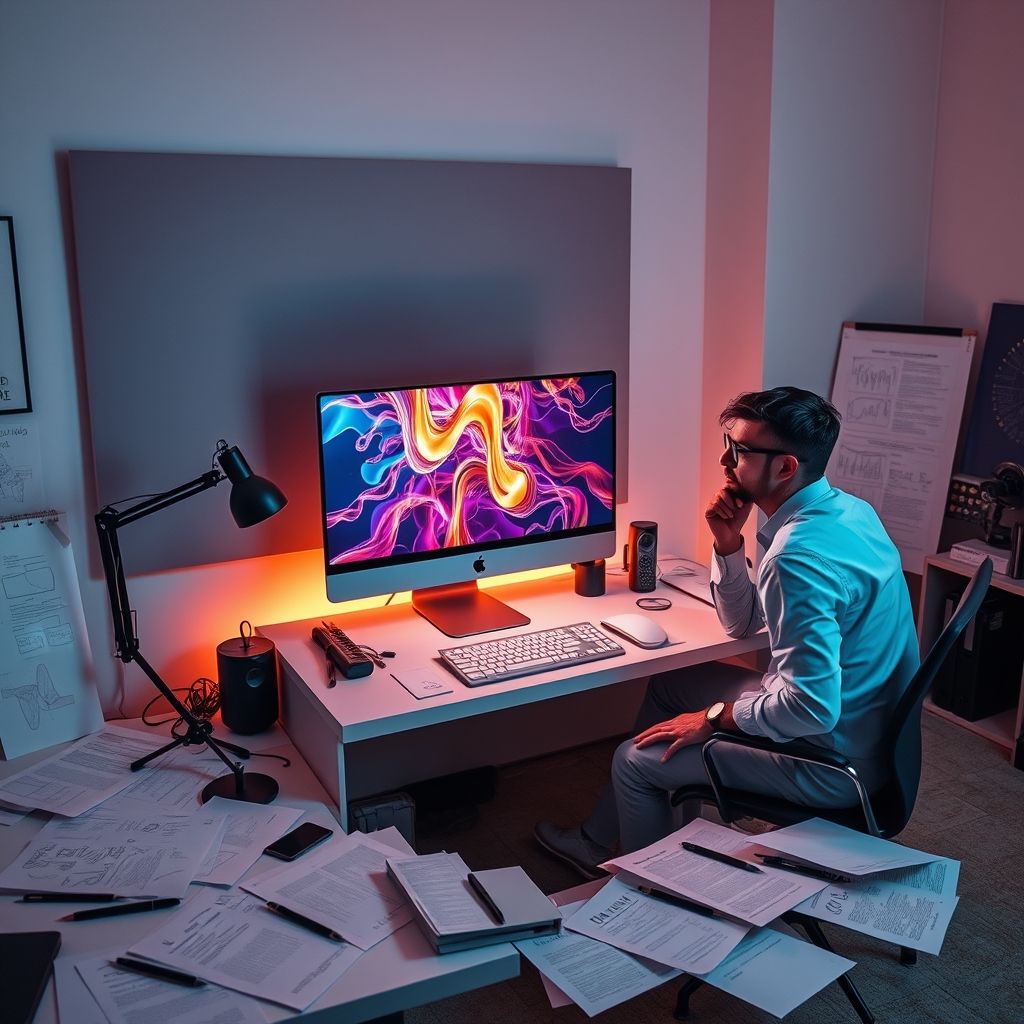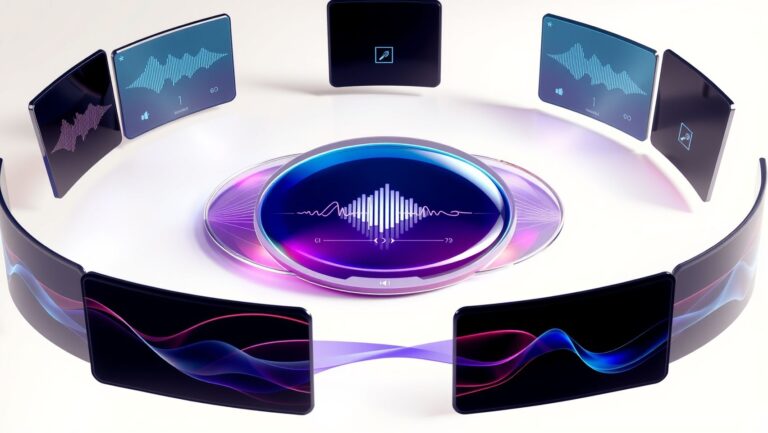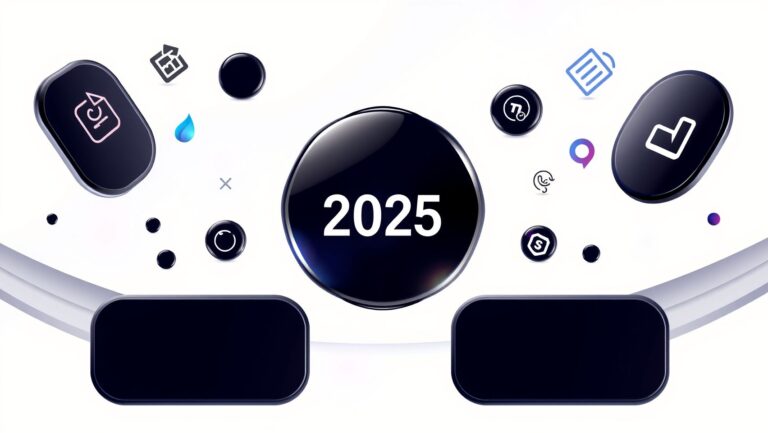Are AI-Generated Visuals Copyrighted? Legal and Ethical Insights for Artists and Creators
Have you ever wondered if an AI-created image can hold the same copyright protections as a piece crafted by a human artist? Recent high-profile cases have sparked intense debate: is AI-generated art truly original, or does it infringe on existing copyrights? As AI tools become more powerful and accessible, a surge of stunning visuals is flooding social media and creative markets—yet questions about ownership and ethics loom large. Understanding the legal landscape is essential for artists, designers, and enthusiasts alike.
This article aims to unpack the complex world of AI-generated visuals, focusing on copyright concerns and how to navigate them responsibly. We’ll explore key legal guidelines, shed light on common dilemmas, and introduce practical tools like TinEye for verifying image origins. Whether you’re creating, licensing, or consuming AI art, knowing your rights—and how to verify authenticity—can make all the difference. Ready to demystify the legal gray areas and ensure your creative pursuits stay ethical and protected? Keep reading to discover must-know insights that will help you stay ahead in this rapidly evolving landscape.
What Research Says About AI and Copyright Challenges

Recent research into AI-generated visuals reveals a complex landscape of legal ambiguities, ethical dilemmas, and ongoing debates. As AI tools such as Midjourney, DALL·E 2, and Stable Diffusion become more widespread, understanding their implications for copyright law is crucial for artists, creators, and legal professionals alike. This section explores the key findings from current studies, highlighting both the technological capabilities and the legal challenges associated with AI-created imagery.
Overview of AI Tools in Visual Creation
AI-powered image generation tools have revolutionized how digital art is produced. Platforms like Midjourney and DALL·E 2 enable users to generate highly detailed visuals from textual prompts, while Stable Diffusion offers an open-source alternative allowing greater customization. These tools leverage deep learning models trained on vast image datasets to synthesize new visuals, often blurring traditional distinctions between creator and tool. As a result, questions arise about who holds the copyright—if anyone—over these AI-created artworks.
Legal Debates Over Authorship and Ownership
A core issue in AI-generated visuals pertains to authorship rights. Traditional copyright law presumes a human creator responsible for the work’s originality. However, with AI tools generating images independently based on user input, legal scholars are debating whether these works qualify for copyright protection at all. Some argue that since the AI acts as a tool under user guidance, the human operator should hold rights, while others suggest that without direct human authorship, such works may fall outside copyright protection, raising questions about their legal status.
Furthermore, disputes over ownership frequently surface when multiple parties contribute to an AI-generated artwork or when AI is used to replicate specific styles or images. This ambiguity complicates licensing, monetization, and moral rights, underscoring the need for clear legal frameworks adapted to AI’s evolving role in art creation.
Copyright Infringement Risks from Training Data
Many AI models rely on extensive datasets collected from the internet, often without explicit permissions. For instance, datasets like LAION aggregate millions of images—many of which are copyrighted—used to train models like Stable Diffusion. The use of such data raises significant copyright concerns, as training on copyrighted works may constitute infringement, especially if the resulting models produce outputs resembling original works. These practices have led to litigation and calls for transparency about training data sources.
Legal scholars are examining whether the use of copyrighted images in training datasets qualifies as fair use or constitutes unlawful copying. The resolution of these issues will heavily influence future AI training methodologies and the legal protections afforded to both creators and AI developers.
Notable Court Cases and Legal Frameworks
While the legal landscape is still emerging, several important cases and regulatory considerations shape the conversation. In the United States, courts are grappling with questions about copyrightability of AI-generated works, with some decisions suggesting that purely AI-created visuals may not qualify for protection due to lack of human authorship. The U.S. Copyright Office has also clarified that works created entirely by AI without human involvement are not eligible for registration.
In the European Union, recent proposals aim to update copyright directives to better accommodate AI innovations, emphasizing transparency and accountability in training data and outputs. China’s legal framework emphasizes the protection of intellectual property rights, with recent rulings indicating that outputs generated independently by AI may not merit copyright unless substantial human involvement is demonstrated.
Across jurisdictions, there remains a consensus that legal clarity is lacking, and legislatures worldwide are urged to develop guidelines that address AI’s unique challenges to copyright law.
Benefits of AI in Art and Methods for Verification
Despite these legal uncertainties, AI has proven to be a powerful tool for artists, enabling rapid prototyping, new artistic expressions, and democratized access to creative resources. To mitigate copyright risks, tools like TinEye can assist creators and publishers in verifying whether AI-generated images resemble existing copyrighted works. Such tools scan the web to identify the origin of images, helping users avoid unintentional infringement or misuse.
Moreover, developing comprehensive ethical guidelines and best practices is essential for responsible AI use. These include transparency about training data sources, respecting intellectual property rights, and maintaining a human-in-the-loop approach to ensure accountability and originality.
Limitations and the Need for Clearer Legal and Ethical Boundaries
While technological advancements proceed rapidly, the legal frameworks lag behind, creating a gray area that exposes artists and developers to risks. The absence of universally accepted standards makes it challenging to determine rights, responsibilities, and liabilities related to AI-generated visuals. Ethical considerations, such as respecting original creators and promoting fair use, remain underdeveloped in many jurisdictions.
Addressing these gaps requires collaborative efforts among technologists, legal experts, artists, and policymakers. Establishing clear guidelines for training data, ownership, and attribution will help balance innovation with respect for intellectual property and moral rights. Until such standards are in place, all stakeholders should exercise caution, document processes diligently, and utilize verification tools like TinEye to navigate the complex intersection of AI and copyright law effectively.
How to Verify Authenticity and Protect Your Rights in AI Art
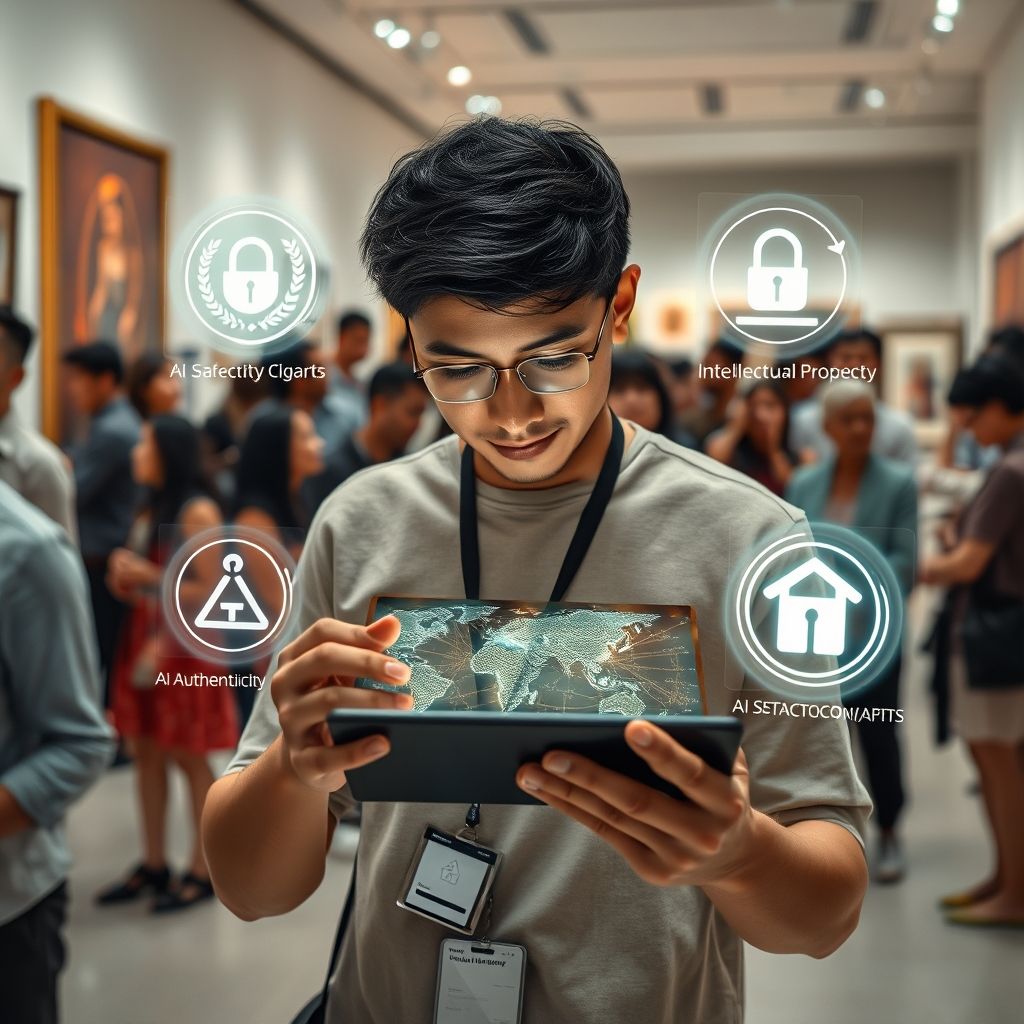
In the rapidly evolving landscape of AI-generated visuals, verifying the origin and asserting ownership of such images is more crucial than ever. With tools and methodologies at your disposal, you can confidently navigate copyright concerns, protect your creative work, and ensure ethical use. This section provides practical, step-by-step techniques to confirm image authenticity and safeguard your rights in the digital age.
Using Reverse Image Search Engines
Reverse image search tools are foundational for verifying the source of an AI-generated image. They help identify where an image has appeared online, whether it has been altered, or if it originates from a protected work.
- TinEye: This dedicated reverse image search engine offers fast, precise results. Upload or input the URL of your image, and TinEye will scan its extensive database to find matches across the web. It is especially useful for detecting unauthorized use or modifications of your images.
- Google Images: Using the “Search by Image” feature, you can upload an image or insert its URL to discover similar images and their sources. Google’s extensive indexing makes it effective for identifying original publications or potential infringements.
**Action Tip:** Save a baseline version of your work before distribution, and use TinEye or Google Images periodically to monitor for unauthorized uses. Regular checks help maintain your rights and detect misuse early.
Applying Watermark Detection and Blockchain Verification
Many artists embed digital watermarks into their works to establish authorship. While traditional watermarks are visible for viewers, digital watermarks are often invisible and require specialized detection tools.
- Watermark Detection Tools: Software such as Fotoforensics or Digitsign can analyze images for embedded watermarks, though their effectiveness varies depending on the watermarking technique used.
- Blockchain and NFT Verification: Blockchain-based platforms can verify ownership through unique tokenization of artworks. When you create an NFT, you register your work on a blockchain, establishing an immutable proof of ownership.
**Limitations:** Current watermarking detection tools are not universally reliable, as AI artists can manipulate or remove embedded watermarks. Blockchain verification, on the other hand, provides a robust legal proof of ownership once properly registered.
Understanding AI Watermarking and Its Current Limitations
AI watermarking involves embedding hidden identifiers within an image during generation or post-production. However, advances in AI editing tools can sometimes remove or distort these watermarks, challenging their reliability.
While emerging standards—such as markup encoded directly into models—aim to improve watermarking robustness, it remains an ongoing battle between watermark creators and those seeking to strip them away. Consequently, relying solely on watermark detection is insufficient; complementary verification methods are essential.
Documenting Your Creative Process for Legal Protection
Comprehensive documentation of your artistic process enhances your legal standing and serves as evidence of authorship. Consider maintaining detailed records of concepts, drafts, tool settings, and timestamps related to your AI-generated work.
- Keep timestamps and version histories: Save iterative versions of your images, ideally with timestamps, to demonstrate your progression and originality.
- Save raw data and prompts: Record the prompts, datasets, and settings used during generation, crucial for establishing your creative input.
- Use digital notebooks or logs: Platforms like Evernote or dedicated project logs help organize and secure detailed records for future reference.
These steps create a tangible trail that can support claims of authorship or originality in legal disputes or licensing negotiations.
Leveraging Copyright Registration for AI-Generated Works
While copyright laws are still adapting to AI art, registering your work provides formal legal recognition. In many jurisdictions, registration enhances your ability to enforce rights and seek damages in infringement cases.
- Understand your jurisdiction’s policies: Check whether AI-generated images qualify for registration and what documentation is required.
- Register promptly: File your work with the relevant copyright office soon after creation to secure legal protections.
- Include detailed descriptions: Clarify the extent of your creative input and the role of AI tools used, preventing potential disputes over authorship.
Case success stories often involve artists who registered their AI works early, establishing clear legal rights before infringement cases arise.
Case Studies Demonstrating Successful Verification
Consider a digital artist who noticed her AI-generated piece circulating without attribution. She used TinEye to trace its online appearances, revealing unauthorized copies. By documenting her creative process and registering the work with copyright authorities, she strengthened her claim. When infringers refused to cease using her work, she filed a legal complaint that cited her registration and documented evidence, resulting in the infringer’s account being taken down.
Another example involved a designer who embedded a digital watermark into her AI art. While someone attempted to remove it, her detection tools confirmed the watermark’s presence. Coupled with her blockchain ownership proof, she confidently disputed the unauthorized use, leading to a successful DMCA takedown. These cases highlight the importance of multi-layered verification strategies to protect your rights effectively.
Legal Strategies and Guidelines for Ethical AI-Generated Visuals
As AI technologies become more adept at generating compelling visuals, artists, creators, and organizations face complex legal and ethical challenges. Navigating these waters requires a clear understanding of current legal frameworks, responsible training practices, and emerging regulatory policies. Establishing best practices not only safeguards creators from potential infringement but also promotes a responsible approach to AI development and use in visual arts.
Understanding International Differences in AI Copyright Law
Legal approaches to AI-generated visuals vary significantly across jurisdictions, reflecting differing cultural attitudes and legislative priorities. For example, in the United States, copyright law traditionally grants protection to works created by human authors, leaving AI-generated works in a gray area. Recent debates center on whether and how to extend copyright to such works, with some proposing new categories or amendments to existing laws.
In contrast, the European Union emphasizes protecting original works and is exploring frameworks that could recognize AI’s role in creation while respecting the rights of original artists. Countries like China are actively developing regulations to address AI-generated content, often focusing on transparency and data security. These global variations underscore the importance for creators and organizations to stay informed about regional legal requirements and potential future changes.
Best Practices for Training AI Models Responsibly
Responsible training of AI models is fundamental to ethically producing AI-generated visuals. Creators should prioritize the use of licensed, publicly available, or openly licensed datasets to avoid infringement risks. Avoid sourcing training data from unknown or potentially copyrighted materials without clear permissions.
Implementing transparency in training processes and documenting data sources enhances accountability. Developers are encouraged to employ techniques like data anonymization and to contribute to datasets that respect the rights of original artists. Such practices foster trust and align with emerging standards for ethical AI development.
Legal Pathways for Registering AI-Created Works
While traditional copyright registration focuses on human authorship, the rise of AI-generated works prompts new considerations. Creators can register works that involve significant human input or creative control, emphasizing the role of human authorship in the process.
In some jurisdictions, establishing legal ownership may involve documenting the development and contribution process, and registering with relevant copyright offices as a work of joint or individual authorship. Legal advice is crucial in navigating these pathways, especially as policies evolve to accommodate AI-generated content.
Ethical Guidelines for Fair Use and Respecting Original Artists
Fair use remains a cornerstone concept, allowing limited use of copyrighted material for purposes such as critique, education, or commentary. Creators should carefully assess whether their AI-generated visuals qualify under fair use principles, considering factors like the purpose, nature, amount used, and effect on the market value of original works.
Respectting original artists also involves giving credit when their styles or specific elements heavily influence AI outputs. Using tools like TinEye for image verification can help identify potential infringements, ensuring that creators remain accountable and respectful of intellectual property rights.
How Policymakers Are Shaping Future Regulations
Policymakers worldwide are actively engaging in discussions to establish clearer regulations around AI-generated content. Initiatives include drafting legislation that addresses copyright ownership, licensing standards, and transparency mandates for AI tools.
International organizations are also collaborating to develop harmonized policies, aiming to balance innovation with protection of creators’ rights. Staying informed about these policy developments enables creators and organizations to adapt practices proactively and contribute to shaping fair and effective regulations.
Recommendations for Creators to Avoid Infringement
- Use licensed, public domain, or openly licensed datasets for training AI models.
- Document the sources and permissions related to data used in training processes.
- Apply thorough verification tools, like TinEye, to detect potential copyright issues in generated visuals.
- Engage in continuous legal education to stay updated on evolving laws and policies.
- Leverage human oversight to ensure that the AI outputs do not infringe on existing works.
- Respect original artists by giving appropriate attribution and avoiding stylistic plagiarism.
- Seek legal counsel when uncertain about ownership or infringement risks.
By adopting these best practices and staying informed about international legal developments, creators can contribute to a responsible and ethical AI ecosystem. Responsible engagement not only protects their interests but also fosters public trust and innovation in the visually creative industries.
Gaps in Current Research and What Still Needs to Be Explored
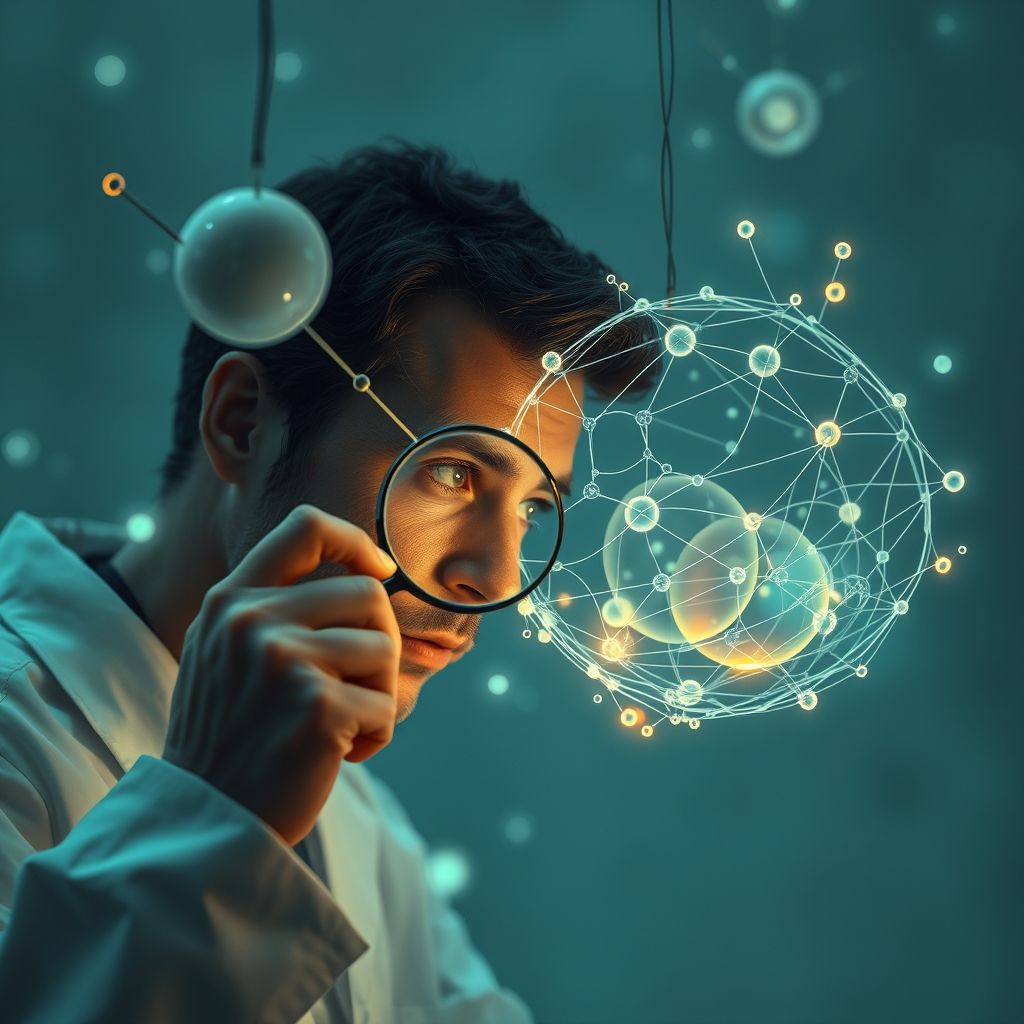
As the field of AI-generated visuals rapidly evolves, it becomes increasingly clear that there are significant gaps in both research and practical implementation concerning legal and ethical considerations. Addressing these gaps is essential to constructing a comprehensive framework that supports artists, creators, and legal stakeholders, ensuring responsible use and compliance in an emerging technological landscape. Closing these gaps requires concerted effort, interdisciplinary collaboration, and forward-looking strategies that anticipate future challenges.
Limited Analysis of Responsible Training Methods for AI Models
One of the most pressing areas needing further investigation is the development and evaluation of *responsible training methods* for AI models used in visual generation. Many current AI systems are trained on vast datasets that often include copyrighted material without explicit permissions, raising ethical questions and legal vulnerabilities. Researchers must explore practices such as dataset curation that prioritize licensed or public domain content, innovative techniques like data augmentation that minimize reliance on copyrighted works, and transparency mechanisms to document source materials.
Further studies are needed to establish standardized protocols for responsible data collection, including how to notify contributors and obtain necessary rights. Practical implementation of such methods can guide developers toward ethically sound AI systems and bolster industry trust. Additionally, exploring automated tools for detecting copyrighted content in training datasets could serve as a safeguard, but this area remains underdeveloped and warrants robust research.
Insufficient Exploration of Legal Registration Processes for AI Art
Legal frameworks around copyright registration for AI-generated visuals are still in their infancy. Currently, artists and creators often lack clear guidance on whether and how AI-generated works can be registered for copyright protection. Further research should investigate how existing laws apply to AI art and whether new legal categories or registration processes are necessary.
Empirical studies examining jurisdiction-specific registration procedures—especially in countries with diverging intellectual property laws—are crucial. Practical implications include creating guidelines that help stakeholders navigate registration, protect rights, and validate ownership. Developing accessible, standardized processes could provide clarity for creators and reduce legal ambiguities that currently hinder the commercial and ethical deployment of AI visuals.
Growth of Case Studies on Verification Tool Usage and Efficacy
While verification tools like TinEye are increasingly used to assess image originality and provenance, there is a paucity of detailed case studies demonstrating their effectiveness in real-world scenarios. Future research should compile and analyze examples where these tools successfully detected unauthorized use or verified legitimate ownership, providing insights into their strengths and limitations.
Such case studies would inform best practices, highlight common pitfalls, and guide improvements in tool design. Moreover, understanding the contexts in which verification tools are most effective can help creators allocate resources efficiently and foster more widespread adoption. Transparency regarding false positives, false negatives, and usability issues is essential for building trust and ensuring these tools serve their intended purpose efficiently.
International Legislative Divergences and Their Implications
AI-generated visuals exist within a complex web of international copyright laws, which often vary significantly across jurisdictions. Discrepancies in legal protections, definitions of authorship, and copyright registration procedures create uncertainties for stakeholders operating across borders. These divergences demand comprehensive analysis to understand their implications and develop harmonized or compatible legal standards.
Further research should focus on comparative legal studies, identifying gaps, overlaps, and conflicts that influence AI art distribution and ownership. This knowledge can inform policymakers in crafting international treaties or bilateral agreements that facilitate fair use and respect creators’ rights in a globally connected environment. It also highlights the need for transnational guidelines that support innovation while safeguarding intellectual property rights.
Need for Clear Success Metrics for Verification and Legal Compliance
Currently, there is a lack of standardized success metrics to evaluate the performance of verification tools and legal compliance strategies related to AI-generated visuals. Defining measurable indicators—such as accuracy rates, false positive/negative ratios, user satisfaction, and legal certainty—is crucial for assessing progress objectively.
Developing these metrics involves collaboration among technologists, legal experts, and artists, ensuring they address technical robustness, ethical considerations, and usability. Formal benchmarks would not only facilitate iterative improvements but also enable stakeholders to compare tools and methodologies systematically, leading to more reliable and consistent practices in the field.
Comparison of Tool Efficacy, Costs, and Usability for Creators
AI verification tools vary widely in their capabilities, costs, and user interfaces, yet comprehensive comparative evaluations are lacking. Stakeholders need detailed analyses that weigh factors such as effectiveness in detecting copyright infringement, ease of use for non-technical users, financial affordability, and integration with existing workflows.
Future research should focus on conducting empirical studies that compare multiple tools under diverse scenario setups. The goal is to identify best-in-class solutions and provide guidance tailored for different types of creators—from independent artists to large studios. Simplifying tool usability and reducing costs will democratize access, promoting responsible and legally compliant AI-generated visual content across the creative industry.
Practical Tips for Artists and Lawyers Navigating AI Art Legalities
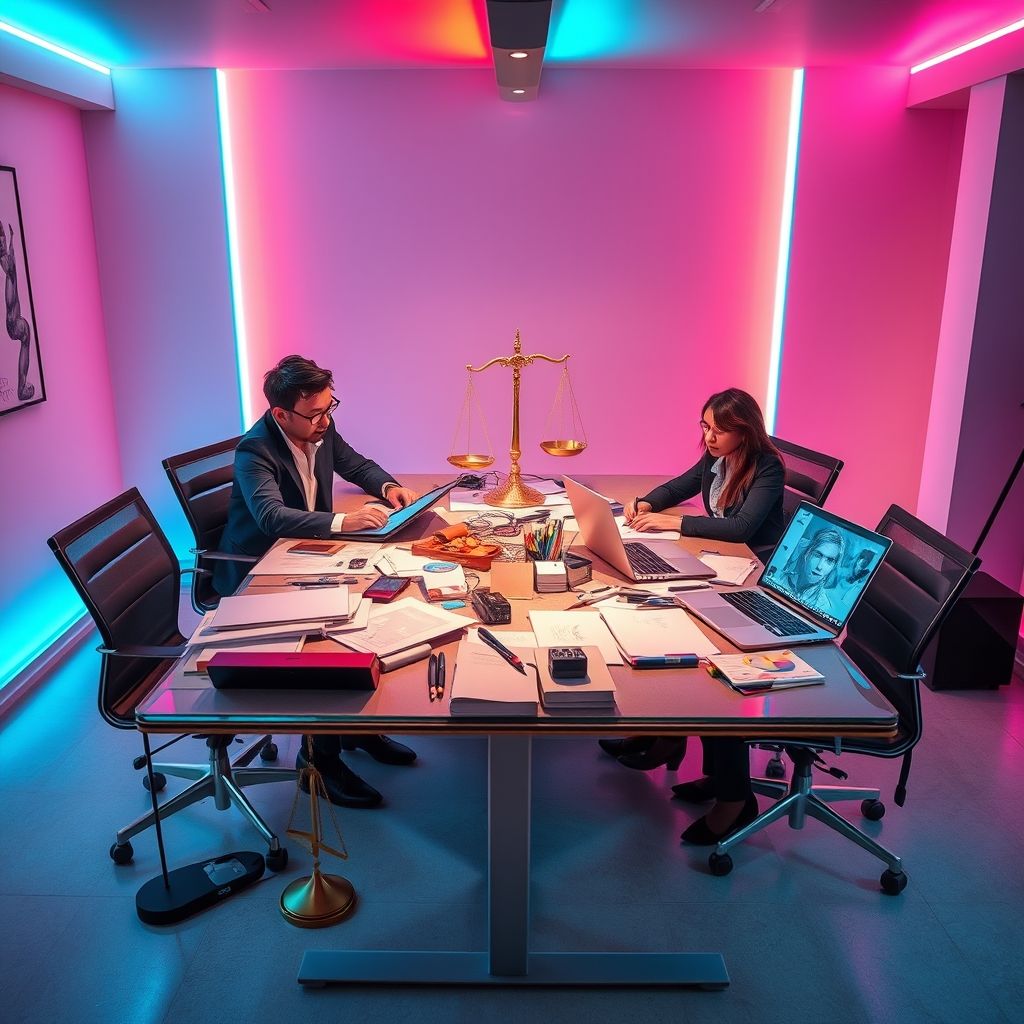
As AI-generated visuals become more prevalent, artists and legal professionals face new challenges in ensuring copyright compliance and verification. Navigating this complex landscape requires a strategic approach, clear documentation, and staying informed about technological and legal developments. Implementing practical workflows can help protect creative rights while maintaining ethical standards and fostering trust with clients.
Document Your Work Methodically
Begin by establishing a robust process for recording every stage of your AI art creation. Keep detailed records of the prompts used, the AI tools involved, settings applied, and any modifications made during the process. This documentation serves as evidence of your creative input and can be crucial in disputes over originality or rights.
Additionally, save timestamps, version histories, and metadata associated with your work. Such thorough records not only assist in verifying authorship but also demonstrate transparency should questions about copyright origins arise.
Select Appropriate Verification Tools Based on Needs and Budget
For verifying whether an AI-generated image is original or has been reused, tools like TinEye can be invaluable. TinEye offers reverse image searches to trace the origin of visuals, but it is more effective with traditional images and may have limitations with AI-generated content. If you require more comprehensive checks, consider paid services like PicScout or proprietary image recognition platforms that specialize in AI art verification.
Assess your needs by considering the volume of work, the desired accuracy, and budget constraints. Free tools are suitable for initial assessments, while premium options provide deeper insights and legal-grade verification capabilities.
Communicate Clearly with Clients and Colleagues
Open dialogue around AI art legalities fosters understanding and mitigates potential conflicts. When working with clients, clarify the rights associated with AI-generated visuals, including licensing, originality, and the scope of usage rights. Explain the limitations of AI tools and the steps you take to verify and secure rights.
Internally, coordinate with colleagues and stakeholders to establish shared standards for documenting and verifying AI-generated work. Clear communication ensures everyone is aligned on copyright considerations and ethical practices throughout the project lifecycle.
Stay Informed on Legal and Ethical Developments
The legal landscape concerning AI art continually evolves, with jurisdictions updating guidelines and statutes. Subscribe to legal newsletters, attend industry webinars, and participate in relevant professional groups to keep informed about legislation and court decisions affecting AI-generated visuals.
Understanding recent rulings and ethical standards helps you adapt your workflows proactively, reducing legal risks and promoting responsible art creation.
Collaborate with Technologists to Improve Verification Methods
Partnering with AI developers and technologists can lead to the development of more accurate and reliable verification tools. Engage in dialogues or collaborative projects to improve detection algorithms and establish standards for AI art attribution.
This cooperation can foster innovation, enhance transparency, and better safeguard artists’ rights in an increasingly digital creation environment.
Leverage Community Resources and Legal Support Networks
Participate in artist and legal communities that share knowledge and resources related to AI copyright issues. Online forums, local associations, and industry groups often exchange valuable insights, templates for documentation, and strategies for navigating legal challenges.
When facing complex questions, consulting with specialized intellectual property attorneys or legal clinics can provide tailored advice and help ensure compliance with current laws.
Implementing these practical steps creates a resilient framework for managing AI-generated visuals responsibly. By systematically documenting work, choosing suitable tools, maintaining open communication, staying informed, collaborating with experts, and leveraging community support, artists and lawyers can effectively navigate the dynamic landscape of AI art copyright issues.
Future Outlook: How AI and Law Will Co-evolve in Visual Content Creation
As AI technology continues to revolutionize visual content creation, the legal landscape is poised for significant evolution. Future developments will shape how artists, creators, and tech companies navigate copyright issues, ensuring that innovation proceeds responsibly and ethically. Staying ahead of these changes will be crucial for those invested in the creative economy, fostering a proactive approach to emerging legal and ethical challenges.
Anticipated Legislative Updates Worldwide
Global legislative frameworks are expected to adapt rapidly to keep pace with AI advancements. Countries may implement new copyright laws that explicitly address AI-generated works, clarifying ownership rights and fair use policies. For example, some jurisdictions might recognize AI-assisted creations as jointly owned by developers and users, while others could establish new licensing categories tailored for machine-generated content. Regular updates to legal statutes will likely emphasize transparency, accountability, and creator rights, providing clearer guidance for both AI developers and artists.
Emerging Technologies in Image Verification and Rights Management
Innovations in image verification tools are set to become vital for legal and ethical compliance. Advanced fingerprinting and digital watermarking techniques can embed provenance data directly into visuals, enabling quick verification of origin and licensing status. Tools like enhanced versions of TinEye or new AI-powered rights management platforms will automate rights tracking, minimize copyright infringement, and support lawful use. These technologies will empower creators to confidently share, license, or monetize their visuals, fostering a more secure digital ecosystem.
The Role of International Cooperation and Treaties
Cross-border collaboration will be fundamental in establishing a cohesive legal framework for AI-generated visuals. International treaties may emerge to harmonize copyright standards, facilitating the recognition and enforcement of rights globally. Organizations like the World Intellectual Property Organization (WIPO) could spearhead initiatives emphasizing unified rules, fostering cooperation among nations to address disputes, licensing, and access issues. Such efforts will promote fairness, reduce jurisdictional conflicts, and support artists working across borders with confidence.
Potential for New Licensing Models and Legal Frameworks
The future may see innovative licensing schemes tailored for AI-created works. These could include dynamic licenses that adapt based on use, AI-specific copyright pools, or blockchain-based smart contracts ensuring transparent and automated rights management. Legal frameworks might evolve to recognize collective rights organizations focused exclusively on AI-generated content, streamlining licensing processes and ensuring fair compensation. These new models will balance creator incentives with broader access, encouraging ethical sharing and monetization of visual art.
How Artists Can Position Themselves Ethically and Legally for the Future
Proactive engagement and education are key for artists aiming to navigate future legal landscapes. Staying informed about legislative developments, participating in industry dialogues, and adopting best practices for rights management will be essential. Artists should consider integrating watermarking, clear licensing, and provenance documentation into their workflows. Cultivating an understanding of emerging legal frameworks will enable creators to defend their rights and ethically collaborate with AI tools, fostering a sustainable creative future.
Encouraging Innovation Balanced with Responsibility
The evolving ecosystem offers exciting opportunities for innovation, but it must be guided by responsibility and integrity. Creators, developers, and policymakers should work together to develop standards that protect rights, promote fairness, and foster technological progress. Encouraging open dialogue, supporting ethical AI research, and establishing robust legal safeguards will help ensure that visual content creation advances harmoniously with societal values. Embracing this balance will inspire a future where creativity and ethics grow together, enhancing cultural richness and technological innovation.
Conclusion
Understanding the legal and ethical landscape surrounding AI-generated visuals is essential for artists, creators, and innovators striving to navigate this rapidly evolving field. As AI technology continues to advance, the importance of implementing verification techniques—such as tools like TinEye—cannot be overstated in ensuring the authenticity and proper attribution of images. Moreover, staying informed about emerging legal guidelines will empower you to make responsible choices and advocate for clearer, fair policies that protect creative rights.
Key
- Recognize the copyright concerns inherent in AI-generated visuals
- Use practical verification methods to confirm image origins
- Engage with ongoing legal developments and policy discussions
- Promote responsible and ethical creative practices
Now is the moment to take action: start applying verification techniques in your work, remain vigilant about legal updates, and collaborate with peers and policymakers to shape a fair digital creative environment. By doing so, you are contributing to a responsible and innovative future where artistry and technology coexist ethically. Together, we can foster a community grounded in transparency, respect, and invention—don’t wait to be part of this crucial movement.
